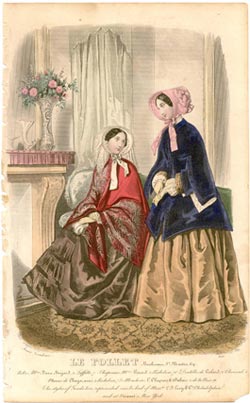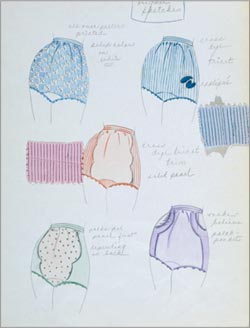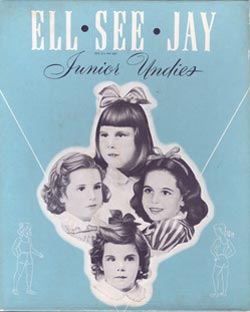|
|
RESOURCES AND COMMENTS
Resources:
An exhibition catalogue, made possible by the Levi Strauss
Foundation has been published in conjunction with this exhibition. Click here to download an order form.
Enjoy the Benefits of Membership!
YUM Members receive free admission, special event
discounts, and a free subscription to the Museum's Seasonal Calendar of
Events and Exhibitions. Click
here to download our membership form.
For more information, view the exhibition
press release. (Will open new window.)
Comments:
Share Your Story!
Over the course of the exhibition, we will be compiling your comments about the topics discussed in the exhibition. Click here to send us an e-mail.
Check back soon for more visitor comments.
Last Friday I had the opportunity to thoroughly enjoy the exhibit. It was particularly meaningful to me as it traced the life of my grandfather, Louis Lipchansky. Born in Minsk, Russia, he arrived in this country in the early 1900's. He came to escape persecution in his home country and to take advantage of greater economic opportunity in America. As a teenager he was initially taught to cut fabric and work a sewing machine. He witnessed the rise of unions and strikes…My grandfather was well into his 80's when he retired. He ended his career in the Garment Industry as a Labor Unions Arbitrator representing the manufacturers for the NY Coat and Suit Association... he had followed a long journey from sewing machine to arbitrator. Thank you to everyone who made this exhibit possible… it was truly enjoyed and appreciated.
As a teenager I recall many lunches at the named restaurant, Lou G. Segal where he would proudly sit and introduce me to his "cronies". I was also reminded of the past when at the end of the exhibit it describes how the Jews that worked together also socialized together, which further explained why our family vacations took us only to the Catskill Mountains or Miami Beach. |
 |
My father, Nathan Bletter, began a specialty contracting company, Manufacturers' Pleating and Stitching, Inc. His shop was located in the garment center, at 555 8th Ave., 19th floor, and as a little girl, I visited there regularly. Was impressed with the rows of tables with sewing machines, an old oak time clock, and a then-antique spinning wheel. My mother was a hand and machine sewer at home and hand-made all my clothes, including coats and hats. |
 |
Feather boas and trimmings have been used on Womens Clothing for many centuries. My family, the Goldbergs, had been in the "feather business" since the middle ages. We still have documents (bills of lading) dated 1810 and 1817 showing feathers shipped from Belgium etc. to France and England. We came over around 1890 in First Class on ships like the Queen Mary I (it had a kosher kitchen) and built a special building to house feathers -- before air conditioning, to keep the feathers cool it had three basements! Still says, "Goldberg Building" 107W 38 St. We would get boxcars of turkey feathers from Chicago (dirty, bloody, full of excrement) and ship them to China where they were washed, sorted and weighed. The "full downs" and "half-downs" were separated and shipped back where the Italians in Long Island City (who had a monopoly) would dye them various colors. We would then string them on special boards built in the 1700's in France. We modified the boards to accept sewing machines when they were invented, and these flat strung feathers would be twisted (by hand until I invented an electric twister around 1964) and steamed so they would stay round. When people asked me my profession, I would always say, "Feather Twister"! This is from around 1920 until the Chinese started making feather trimmings ("marabou") themselves in the 1970’s, when I left for L.A. Ostrich feather boas were made the same way. |
 |
My father, Moe Teplitzky, owned MT Hardware on Seventh Ave. He supplied the garment center with sewing machine parts and supplies, dress racks, and hangers. He was also an electrician and electrified some of the first Singer sewing machines.
We saw the exhibit and loved it. Just wanted to put in a word for the "hardware" men of Manhattan's garment center!
- Phil Teplitzky |
 |
I am 65-years old and the granddaughter of two garment center workers - Louis Blumstein, a presser and Alex Rudolph, an "operator" and friend of David Dubinsky. As a very little girl my mother would take me to meet my grandpas for lunch at one of the many kosher restaurants in the garment center. As we exited the subway station I wondered how we would find my grandpas as I looked up into this forest of men in navy blue topcoats and grey hats, yelling at each other (arguing politics?) in Yiddish.
- Sheila Blumstein Renert |
| |
| |
|
 |
|

Fashion Plate, Godey’s
Lady’s Book, 1849
Collection of the National Museum of American Jewish History,
Philadelphia
|
|

Sketch with Swatches, ca.
1955
MILCO Industries, Inc.
|
|

ELL SEE JAY, Junior
Undies Box Top, 1940’s
Yeshiva University Museum
|
|